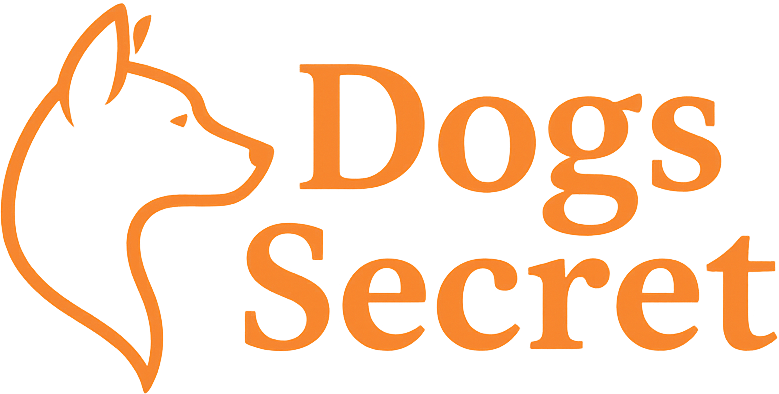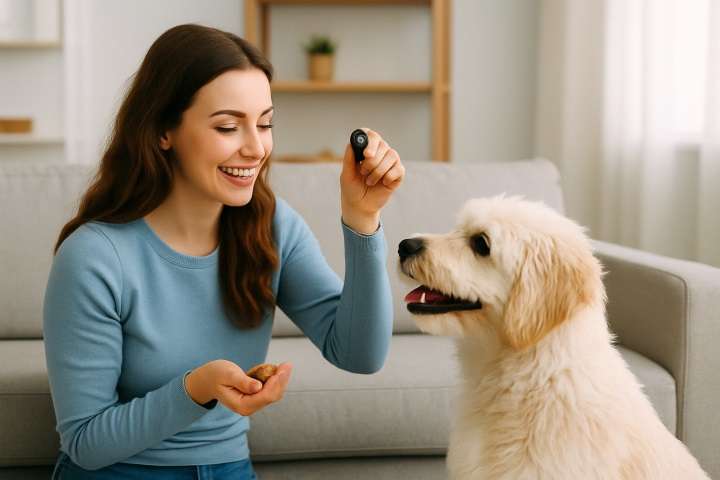Clicker training for beginners is a fast, fun, and effective way to train your dog. If you’re looking for a simple method that builds strong communication and encourages quick learning, clicker training might be the perfect solution. This popular approach uses a small handheld device that makes a clicking sound to mark desired behavior, allowing for precise communication and faster progress.
In this beginner-friendly guide, we’ll explain what clicker training is, how it works, and why it’s such a powerful tool for both puppies and adult dogs. Plus, you’ll learn exactly how to start using a clicker at home—even if you’ve never trained a dog before.
What Is Clicker Training?
Clicker training is a positive reinforcement method that uses a click to tell your dog, “Yes! That’s what I wanted.” The click is immediately followed by a reward—usually a treat—so your dog quickly learns to repeat the behavior that triggered the click.
It’s based on a concept called operant conditioning, which helps animals understand cause and effect.
Why Is It So Effective?
Clicker training works because:
- The sound is unique and consistent—unlike your voice, it never changes
- Timing is precise—you can mark the exact second your dog does the right thing
- Dogs learn faster—they associate the click with a reward and become eager to earn more
- It builds confidence—dogs feel successful and motivated
It’s used by professional trainers, behaviorists, and even zoo keepers worldwide.
What You Need to Get Started
- A clicker: Small and inexpensive (available at pet stores or online)
- Small, soft treats: High-value rewards your dog loves
- A quiet space: Fewer distractions help with learning
- Your dog’s attention: Start when they’re alert but calm
Optional: Use a marker word (like “yes!”) if you don’t have a clicker—though the click is often more effective.
Step-by-Step: How to Start Clicker Training
Step 1: Charge the Clicker (Create Association)
Before using the clicker to train behaviors, your dog needs to learn what the click means.
How to do it:
- Click once, then immediately give a treat
- Repeat this 10–15 times in a row
- Soon, your dog will perk up or look for the treat when they hear the click
Now the clicker means: “You did something right—reward is coming!”
Step 2: Click to Mark a Desired Behavior
Start with an easy behavior like sit or eye contact.
How to use the clicker in training:
- Wait for or lure your dog into the position (e.g., sit)
- As soon as the behavior happens, click once
- Immediately give a treat
- Repeat for a few reps, then add a verbal cue later (e.g., “sit”)
Tip: The click ends the behavior—click after the action, not during.
Step 3: Build New Behaviors
Clicker training works for basic obedience and fun tricks.
You can teach:
- Sit
- Down
- Come
- Spin
- Touch
- Heel
- Go to bed
- And much more!
Break complex behaviors into small steps, clicking and rewarding each successful part.
Clicker Training vs. Verbal Praise
Feature | Clicker Training | Verbal Praise |
|---|---|---|
Precision | High | Medium |
Consistency | Always the same sound | Voice can change tone |
Learning speed | Faster | Slower |
Usefulness in distractions | More effective | Less reliable |
You can still use praise—but the clicker adds clarity and speed to the learning process.
Common Mistakes to Avoid
- ❌ Don’t punish anxiety-related behavior—it only increases stress
- ❌ Don’t force crate use if your dog panics inside
- ❌ Don’t rush the process—this takes weeks to months
- ❌ Don’t make departures or arrivals dramatic
Always remember: Click = Reward. No exceptions.
When to Phase Out the Clicker
Once your dog reliably performs the behavior on cue, you can begin to fade the clicker and use verbal praise or intermittent rewards instead.
Clickers are most useful during the learning phase, but less necessary for well-established behaviors.
Conclusion
Final Thoughts on Clicker Training for Beginners
Clicker training is one of the easiest and most effective ways to communicate with your dog. It creates a clear connection between behavior and reward, speeds up learning, and makes training more enjoyable for both of you.
Whether you’re teaching basic manners or advanced tricks, the clicker can become your secret weapon for success.
Want a printable clicker training chart or step-by-step trick guide? Visit our Clicker Training Toolkit for free resources and videos.

